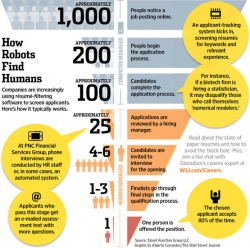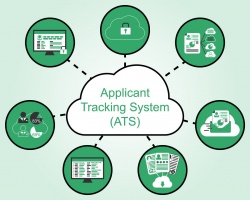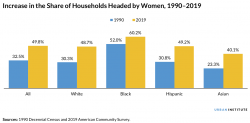Difference between revisions of "Automated Resume Screening"
| Line 26: | Line 26: | ||
===Gender Bias=== | ===Gender Bias=== | ||
Gender bias refers to the tendency to prefer one gender over another. It is a form of unconscious bias, or implicit bias, which occurs when one individual unconsciously attributes certain attitudes and stereotypes to another person or group of people <ref name='builtin'> What Is Gender Bias in the Workplace? ''Built In''. https://builtin.com/diversity-inclusion/gender-bias-in-the-workplace</ref>. In context of job applications, gender bias implies discriminating applicants based on their gender rather than their skills and abilities.` | Gender bias refers to the tendency to prefer one gender over another. It is a form of unconscious bias, or implicit bias, which occurs when one individual unconsciously attributes certain attitudes and stereotypes to another person or group of people <ref name='builtin'> What Is Gender Bias in the Workplace? ''Built In''. https://builtin.com/diversity-inclusion/gender-bias-in-the-workplace</ref>. In context of job applications, gender bias implies discriminating applicants based on their gender rather than their skills and abilities.` | ||
| + | |||
| + | [[File:households1.png |250px|thumbnail|right| Increase in share of households headed by women. <ref name=urbanin> More Women Have Become Homeowners and Heads of Household. Could the Pandemic Undo That Progress? ''Urban Institute'' https://www.urban.org/urban-wire/more-women-have-become-homeowners-and-heads-household-could-pandemic-undo-progress</ref>]] | ||
Learning past applicants and evaluating new applicants based on that knowledge can lead to a gender bias. If a company or specific job role has been previously, or stereotypically, been dominated by a specific gender, the algorithms may learn that as a trend and hence choose future applicants biased for that gender. A real world example of this is illustrated by Amazon | Learning past applicants and evaluating new applicants based on that knowledge can lead to a gender bias. If a company or specific job role has been previously, or stereotypically, been dominated by a specific gender, the algorithms may learn that as a trend and hence choose future applicants biased for that gender. A real world example of this is illustrated by Amazon | ||
s recent experience with its AI recruiting tool <ref name='Amazon'> Amazon scraps secret AI recruiting tool that showed bias against women. ''Reuters''. https://www.reuters.com/article/us-amazon-com-jobs-automation-insight/amazon-scraps-secret-ai-recruiting-tool-that-showed-bias-against-women-idUSKCN1MK08G</ref>. Being a men dominated tech company, at a time when tech was in turn dominated by men, Amazon's AI recruiting tool which it had been developing for past 4 years learnt to prefer male applicants over female applicants. Therefore, it flagged keywords like "women's club" and "president women's chess club" as negatives where they would be otherwise preferred as positives as they indicate leadership positions. Therefore, this led to a bias against the female gender. | s recent experience with its AI recruiting tool <ref name='Amazon'> Amazon scraps secret AI recruiting tool that showed bias against women. ''Reuters''. https://www.reuters.com/article/us-amazon-com-jobs-automation-insight/amazon-scraps-secret-ai-recruiting-tool-that-showed-bias-against-women-idUSKCN1MK08G</ref>. Being a men dominated tech company, at a time when tech was in turn dominated by men, Amazon's AI recruiting tool which it had been developing for past 4 years learnt to prefer male applicants over female applicants. Therefore, it flagged keywords like "women's club" and "president women's chess club" as negatives where they would be otherwise preferred as positives as they indicate leadership positions. Therefore, this led to a bias against the female gender. | ||
| − | At a time when marriage rate | + | At a time when marriage rate is declining and more single women are becoming homeowners <ref name='UrbanI'> More Women Have Become Homeowners and Heads of Household. Could the Pandemic Undo That Progress? ''Urban Institute''. https://www.urban.org/urban-wire/more-women-have-become-homeowners-and-heads-household-could-pandemic-undo-progress</ref>, such biases, be it intentional or unintentional, can lead to severe discrepancies in financial conditions of many households. |
===Ethnic Bias=== | ===Ethnic Bias=== | ||
| + | Ethnic bias can be defined as engaging in discriminatory behavior, holding negative attitudes toward, or otherwise having less favorable reactions toward people based on their ethnicity <ref name='Cambridge'> Measuring Ethnic Bias: APA Dictionary of Psychology ''American Psychological Association''. https://dictionary.apa.org/ethnic-bias</ref>. In context of job applications, it implies preferring or discriminating between applicants based on their race or ethic backgrounds and not their skills and qualifications. | ||
| + | |||
| + | |||
===Circumstantial Bias=== | ===Circumstantial Bias=== | ||
Revision as of 02:10, 11 February 2022

Automated Resume Screening refers to the use of machine learning algorithms and artificial intelligence (AI) to parse and extract information from applicant resumes. Different algorithms are used to identify relevant skills and experience for the job from the applicant's resume using keywords in the job description and requirements. Variations of algorithms can be used according to the company's hiring criteria. Certain companies may use algorithms that just do word matching between the job post and the resume, while some may place weights on certain past experiences and backgrounds. The use of automated resume screening then may stimulate bias against underprivileged applicants with lesser experience and relevant job backgrounds resulting in gender bias, racial bias, and circumstantial bias.
Contents
Benefits for Companies

Time Efficient
Automating resume screening using AI algorithms saves companies time-to-hire. On average, a recruiter spends 6 seconds to manually scan a resume [3]. AI algorithms can process exponentially more applicants than humans in the same time and can also extract more meaningful information than a human can in the same time. This reduces the amount of applicants recruiters have to manually evaluate before hiring someone for a specific position, in turn reducing the time-to-hire.
Organized
Most resume screening programs come as part of applicant tracking system. These programs can store personal and contact information of different applicants categorized by their key skills and talents. If some candidate does not seem a good fit for some role at the current time, these programs keep their information in the system and can use it in future in case a relevant role opens that is a good fit for the candidate. This increases the pool of applicants and helps companies find a better fit for their roles.
Outreach
Outreach is a time-consuming part of the recruiting process. Companies aim to attract as many applicants as possible in order to find the most appropriate and beneficial fit for their role. More applicants mean more work in terms of organizing, analyzing, and reviewing data for the recruiter which be really inefficient if done manually. Automated resume screening and their accompanying applicant tracking systems speed up the processing of resumes and help recruiters consider both active applicants (applicants applying for the first time) as well as passive applicants (applicants who might have previously applied for a similar role). This makes easier to source more applicants and get a bigger pool and also increases the standards of the applicant pool by considering passive applicants as well.
Different versions of resume screening algorithms can be modified to screen job profiles on certain social media groups and recruiting applications including LinkedIn [4]. Given the millions of users from all over the world on these platforms, companies can extensively expand their outreach.
Ethical Implications

Machine learning and artificial algorithms have grown really powerful and efficient over the years. But still they are not a hundred percent accurate, efficient, and perfect in making decisions. These algorithms are stochastic, not deterministic [6]. These algorithms aim to learn and draw out patterns from past successes and failures. For example, the algorithms learn patterns in attributes of successful applicants and treat them as positives while looking at new applicants. At the same time, they learn attributes of unsuccessful applicants and treat them as negatives while looking at new applicants. This results in a bias towards certain qualities and skills for who is going to get hired. This may seem ideal for companies at the first glance: companies then only get employees that will be beneficial for them or similar to the employees in the past that have been beneficial for them. But sometimes, if the algorithms pick up correct but misleading patterns (correlation is not causation [7]), there can be ethical implications against many groups and subjects including genders, minorities, and applicants' circumstances. Moreover, the same problems can result if the data or past applicants for a certain company or job posting have undesired skills and qualifications because then efficient algorithms can still learn patterns and trends which may not be desirable.
Gender Bias
Gender bias refers to the tendency to prefer one gender over another. It is a form of unconscious bias, or implicit bias, which occurs when one individual unconsciously attributes certain attitudes and stereotypes to another person or group of people [8]. In context of job applications, gender bias implies discriminating applicants based on their gender rather than their skills and abilities.`

Learning past applicants and evaluating new applicants based on that knowledge can lead to a gender bias. If a company or specific job role has been previously, or stereotypically, been dominated by a specific gender, the algorithms may learn that as a trend and hence choose future applicants biased for that gender. A real world example of this is illustrated by Amazon s recent experience with its AI recruiting tool [10]. Being a men dominated tech company, at a time when tech was in turn dominated by men, Amazon's AI recruiting tool which it had been developing for past 4 years learnt to prefer male applicants over female applicants. Therefore, it flagged keywords like "women's club" and "president women's chess club" as negatives where they would be otherwise preferred as positives as they indicate leadership positions. Therefore, this led to a bias against the female gender.
At a time when marriage rate is declining and more single women are becoming homeowners [11], such biases, be it intentional or unintentional, can lead to severe discrepancies in financial conditions of many households.
Ethnic Bias
Ethnic bias can be defined as engaging in discriminatory behavior, holding negative attitudes toward, or otherwise having less favorable reactions toward people based on their ethnicity [12]. In context of job applications, it implies preferring or discriminating between applicants based on their race or ethic backgrounds and not their skills and qualifications.
Circumstantial Bias
Reducing Bias
References
- ↑ Online Job Application Systems. MBA Crystal Ball https://www.mbacrystalball.com/blog/2014/10/19/online-job-application-system/
- ↑ The Advantages of an Applicant Tracking System. ZAMP HR https://blog.zamphr.com/the-advantages-of-an-applicant-tracking-system
- ↑ Bart Turczynski. 2021 HR Statistics: Job Search, Hiring, Recruiting & Interviews. Zety. https://zety.com/blog/hr-statistics#resume-statistics
- ↑ LinkedIn Scraper. Python Package Index. https://pypi.org/project/linkedin-scraper/
- ↑ Avoiding shortcut solutions in artificial intelligence. MIT CSail' https://www.csail.mit.edu/news/avoiding-shortcut-solutions-artificial-intelligence
- ↑ The Limitations of Machine Learning. Towards Data Science. https://towardsdatascience.com/the-limitations-of-machine-learning-a00e0c3040c6
- ↑ Correlation is not causation. The Guardian. https://www.theguardian.com/science/blog/2012/jan/06/correlation-causation
- ↑ What Is Gender Bias in the Workplace? Built In. https://builtin.com/diversity-inclusion/gender-bias-in-the-workplace
- ↑ More Women Have Become Homeowners and Heads of Household. Could the Pandemic Undo That Progress? Urban Institute https://www.urban.org/urban-wire/more-women-have-become-homeowners-and-heads-household-could-pandemic-undo-progress
- ↑ Amazon scraps secret AI recruiting tool that showed bias against women. Reuters. https://www.reuters.com/article/us-amazon-com-jobs-automation-insight/amazon-scraps-secret-ai-recruiting-tool-that-showed-bias-against-women-idUSKCN1MK08G
- ↑ More Women Have Become Homeowners and Heads of Household. Could the Pandemic Undo That Progress? Urban Institute. https://www.urban.org/urban-wire/more-women-have-become-homeowners-and-heads-household-could-pandemic-undo-progress
- ↑ Measuring Ethnic Bias: APA Dictionary of Psychology American Psychological Association. https://dictionary.apa.org/ethnic-bias